Enhancing Texan lives: The birth of LCRA
FEB. 20, 2024
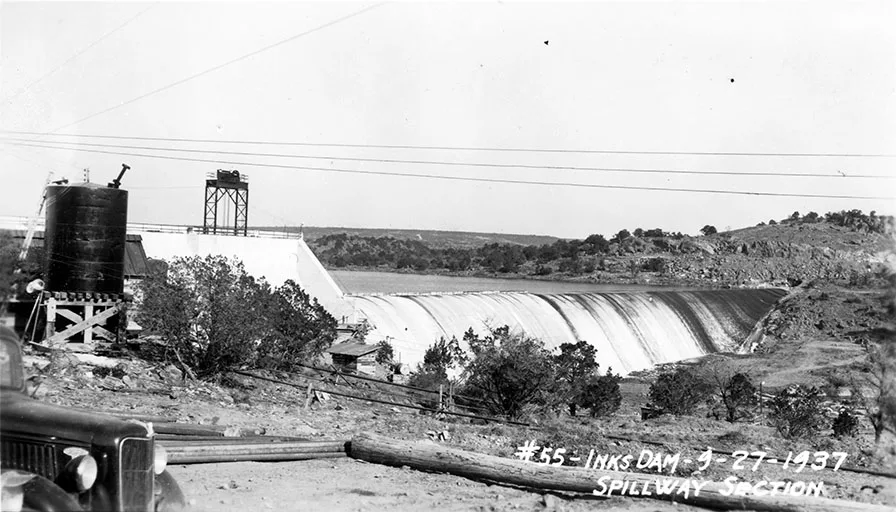
Early Central Texans knew the Colorado River was one of extremes. It could cause devastating floods, while drying to a trickle during hot, dry weather. They recognized the potential value of building dams along the river.
Rural Central Texans also faced an additional problem: the lack of reliable, economical electric service. Investor-owned utilities at the time had focused on serving larger Texas cities.
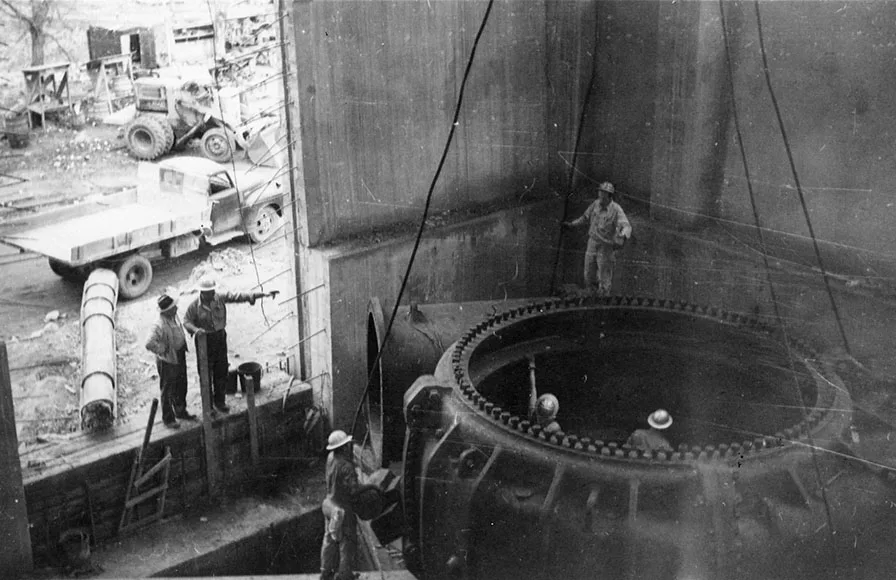
The birth of LCRA
In 1931, a subsidiary of the nationwide Insull utility company began constructing Buchanan Dam.
Insull went bankrupt in 1932 leaving the dam half-built. The only way to finish the dam became federal funds through a public agency. The state’s power brokers spent more than a year wrangling funding before creating the Lower Colorado River Authority in 1934.
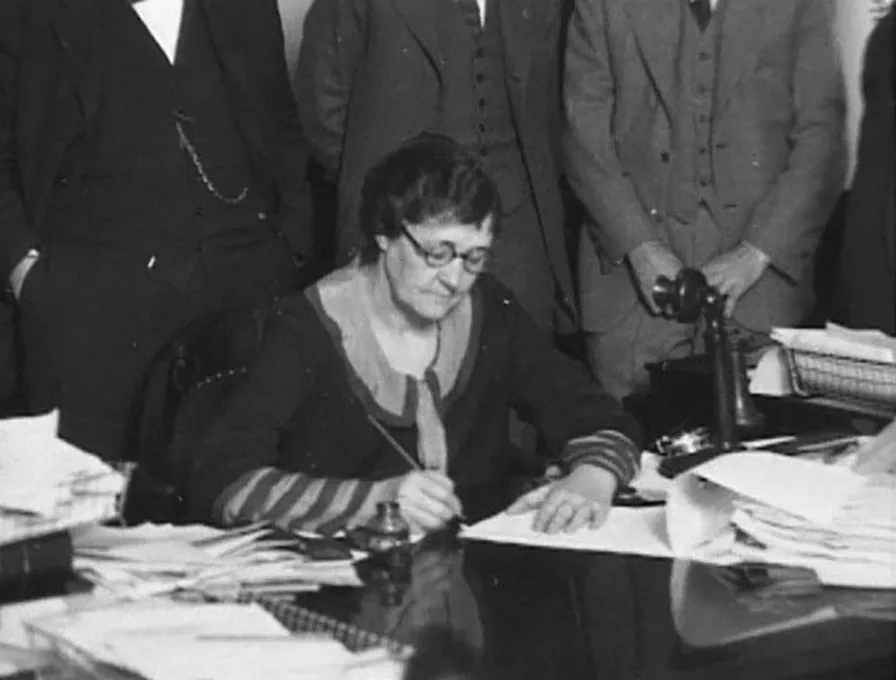
Governor Miriam A. “Ma” Ferguson signed the bill creating LCRA after it passed during a fourth special session on Nov. 13, 1934.
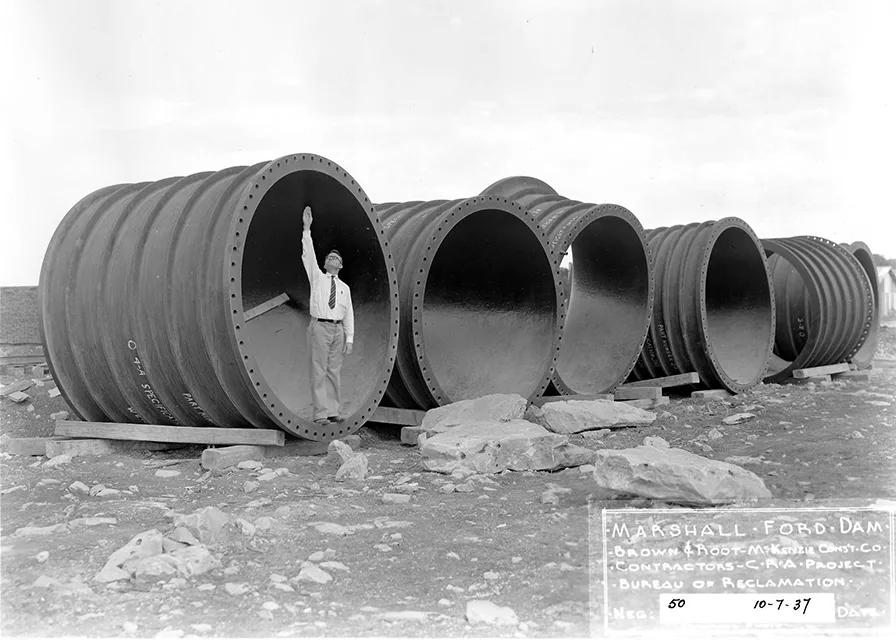
A worker stands inside a pipe at what would become Mansfield Dam.
LCRA’s early years
In 1937, LCRA broke ground on what would become Mansfield Dam, the only flood-control structure in the Highland Lakes.
Lyndon B. Johnson was elected to Congress that year on the campaign promise: use electricity from LCRA dams to bring electricity to rural Central Texas.
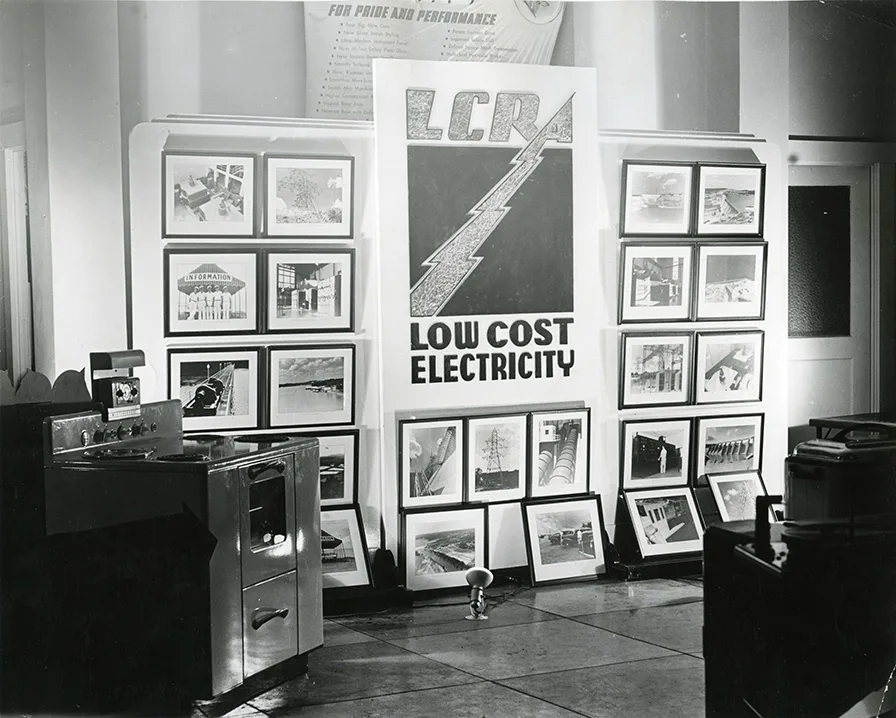
In the 1930s, LCRA offered to serve Central Texas communities with lower-cost electricity if they buy their local utility systems and switch to LCRA. The campaign included “electric fairs” to educate local residents about the conveniences of LCRA appliances.
Here are more highlights:
- Johnson forged partnerships between LCRA and the two electric cooperatives he helped form, Pedernales Electric Cooperative and what is today known as Bluebonnet Electric Cooperative.
- Beginning in the late 1930s, LCRA launched a campaign to serve portions of Central and South Texas with lower-cost electricity generated from its dams.
- In 1938, LCRA completed construction of Buchanan and Inks dams upstream of Mansfield Dam.
- Heavy flooding tested LCRA in 1938. Critics claimed LCRA worsened the flood by the way it operated Buchanan Dam, prompting a Texas Senate investigation. It exonerated LCRA but recommended extending Mansfield Dam by 78 feet for increased protection to Austin and downstream communities.
Learn more on LCRA’s Historical Timeline.


Social Media